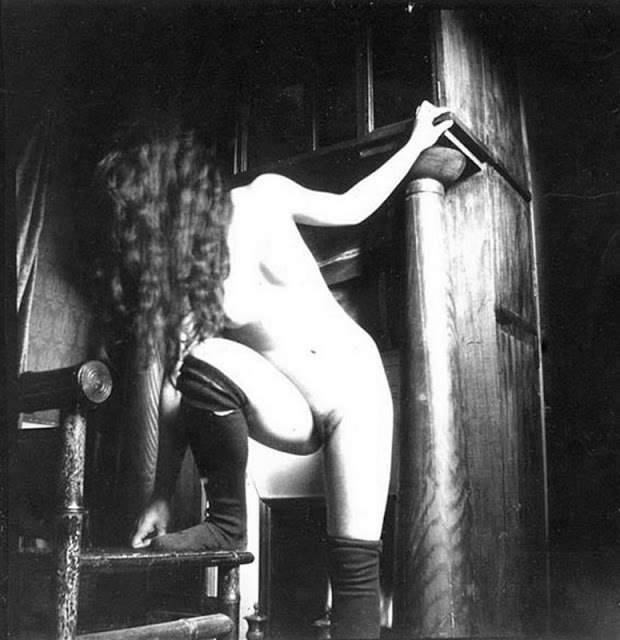Pierre Louÿs was a French poet and writer, most renowned for lesbian and classical themes and known as a writer who “expressed pagan sensuality with stylistic perfection.”
Born Pierre Félix Louis in in Ghent, Belgium he spent most of his life in France where he studied at the École Alsacienne in Paris.
In 1891, Louÿs helped found a literary review, La Conque, where he proceeded to publish Astarte,
an early collection of erotic verse already marked by his distinctive
elegance and refinement of style.
In 1894 Louÿs, traveling in Italy with his friend Ferdinand Hérold, met André Gide, who described how he had just lost his virginity to a Berber girl named Meriem in the oasis resort-town of Biskra in Algeria; Gide urged his friends to go to Biskra and follow his example.
In 1894 Louÿs published another
erotic collection in 143 prose poems, Songs of Bilitis (Les Chansons de Bilitis), this time with strong lesbian themes. The Songs of Bilitis
are the result of Louÿs and Hérold’s shared encounter with Meriem the
dancing-girl, and the poems are dedicated to Gide with a special mention
to “M.b.A”, Meriem ben Atala: praised for its elegant sensuality and refined style, the poems are considered
extraordinary for the author’s compassionate portrayal of lesbians and general female sexuality, an attitude uncommon for the time. Louys claimed they were translations from the Greek
of a poetess contemporary with Sappho, which turned out to be a very
effective hoax- however it did little to dampen public enthusiasm for his works.
The Songs of Bilitis have been illustrated extensively by numerous erotic artists, including Louis Icart, Willy Pogany , Georges Barbier and Pierre Leroy.
“Pornography and Sexual Representation: A Reference Guide” states that Louÿs took over 10,000 nude photographs; he mounted much of his work into albums in 1896. If he was
unsophisticated in the technical sense, his images lose nothing
by this: their stark, grainy quality now appears strikingly
modern in many ways and is part of their appeal. Louys’ technical
naivety was something he had in common with other French
artists-turned-cameramen, notably Degas, Vuillard and Bonnard.
Ironically, the work of all four shares a spontaneity and graphic
strength (the latter due partly to the “risks” they took with using
available daylight) that is rarely evident in the photographs taken by
their more self-conscious professional contemporaries.
Pierre Louys is chiefly remembered today as a Parisian dandy, one of the
leading poets and writers of the French Symbolist movement. Much of
his output was erotic, most significantly the prose poems Chansons de Bilitis,
published in 1894., like Ossian deceiving many eminent scholars. A group of
German antiquarians even took an expedition to the Greek East, seeking
physical evidence of Bilitis. In the context of his
photographs “La Femme et le Pantin” (1898) also deserves to be
mentioned, since it chronicled the gradual breakdown of a man who became
enslaved to a “worthless woman”.
The Symbolist circle Louys inhabited included Oscar Wilde, Mallarmé, Valéry, André Gide and Debussy. He
frequently collaborated with Claude Debussy (Louys has been described as the
director of his literary conscience), who set Chansons de Bilitis to
music in 1897. Debussy used to compose and play for his friends on
Louys’ melodeon – described by J.E. Blanche as a “wretched instrument” –
which dominates the background of the domestic nude.
In 1897 Debussy composed a musical adaptation Chansons de Bilitis (Lesure Number 90) for voice and piano. Debussy returned to the collection in a more elaborate fashion in 1901,
when he composed music entitled “Six Epigraphes Antiques” for a
recitation of six of Louÿs’ poems. These pieces, also collectively
titled “Chansons de Bilitis,” were scored for two flutes, two harps, and
celesta including another six poems making a total of twelve scored
poems. According to contemporary sources the recitation and music were
accompanied by tableaux vivants as well. Apparently only one private
performance of the entire creation took place in Venice.
Socially, geographically and intellectually far apart, there is
nevertheless a certain correspondence in the appearance of Louys’ nudes
and those of the New Orleans photographer E.J. Bellocq.
More Information:
Pierre Louys: 1870-1925 -Selected Works (Isle of Lesbos)
A Catalogue of the Erotic Works of Pierre Louÿs
Aphrodite by Pierre Louys [1937]


























